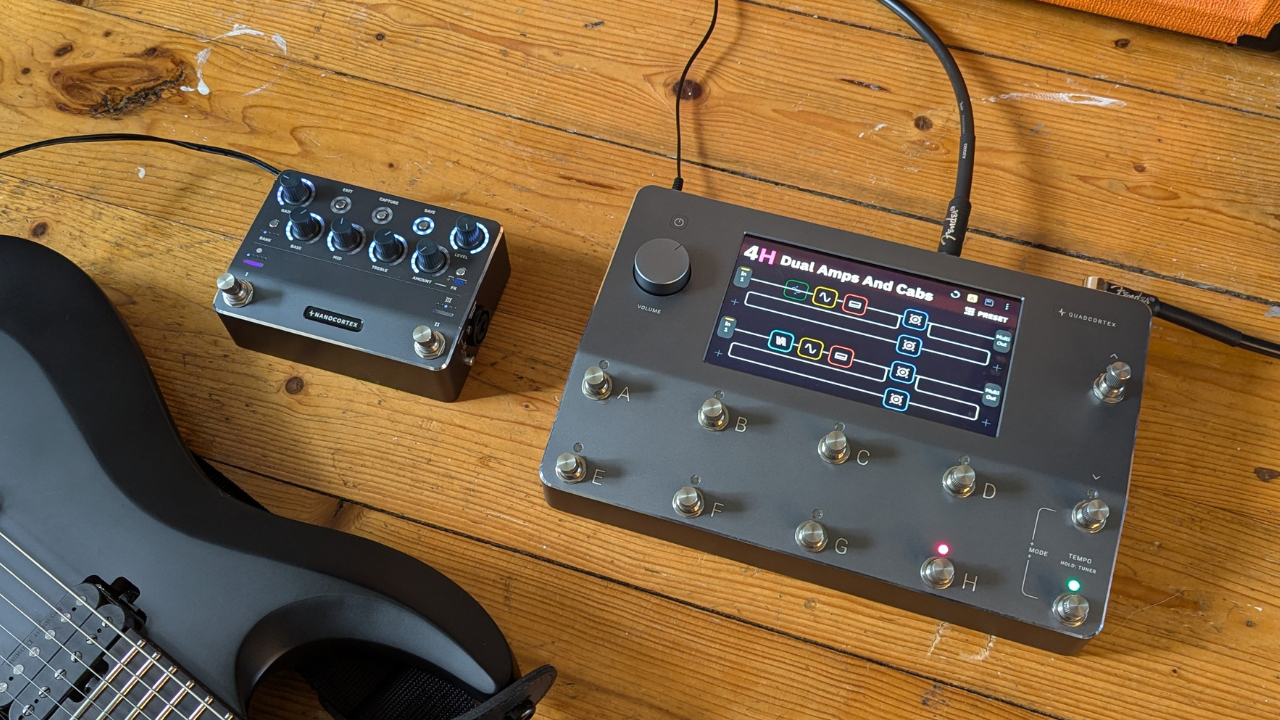
Even if you’re only slightly connected to the world of electric guitar, there’s no doubt you’ll have heard about the Neural DSP Quad Cortex. Widely regarded as one of the best amp modelers around, it’s fast become a staple of touring pedalboards from artists like Jim Root of Slipknot and Dave Mustaine, through to Mike Kerr of Royal Blood (who uses four of them!) and Patrick Stump of Fall Out Boy.
It was with some excitement amongst the guitar community then that Neural began teasing something new with just a simple word – soon. Cue many impatient social media comments and lots of guesswork as to which new Archetype plugin would be released – Archetype: Lil Wayne was our favorite. Instead, we were all duped and what actually arrived was a brand new hardware unit, the pedalboard-friendly Neural DSP Nano Cortex.
If you’re reading this then you’re likely debating which of the two units you should get, or perhaps you’re thinking about adding the Nano Cortex to your collection. So to help you along with your decision, we’re going to deep dive into both units, putting them head to head across a variety of categories to help you determine which you should go for.
Unlike other comparison articles on the web that simply list the specifications of each unit, I’ve physically put the two units side by side to compare them. I’ve spent over a week with both units as part of my recording rig in my home studio, and playing them in the rehearsal room through a PA to simulate live use, to give you the ultimate low down on what’s great, and what’s not so great about each. Let’s get to it.
Neural DSP Quad Cortex vs Nano Cortex: At a glance
Let’s start with the specifications of each unit to give you a general overview of what each brings to the table, we’ve also included links to our full reviews if you want to dive a little deeper.
Neural DSP Quad Cortex
- Neural DSP Quad Cortex review
- Price: $1,849
- Amps: 50+
- Effects: 70+
- IRs: 1000+
- Presets: 10 setlists (256 per)
- Looper: Up to 4m 44s
- Screen: 7” multi-touch
- Wi-Fi: Yes
- Bluetooth: Yes
- Weight: 4.2lbs (1.9kg)
- Contact: Neural DSP
Neural DSP Nano Cortex
- Neural DSP Nano Cortex review
- Price: $549
- Amps: 25 factory, 256 user
- Effects: 5
- IRs: 10 factory, 256 user
- Presets: 64 user
- Looper: No
- Screen: No
- Wi-Fi: No
- Bluetooth: Yes
- Weight: 1.36lbs (0.61kg)
- Contact: Neural DSP
Neural DSP Quad Cortex vs Nano Cortex: Connectivity
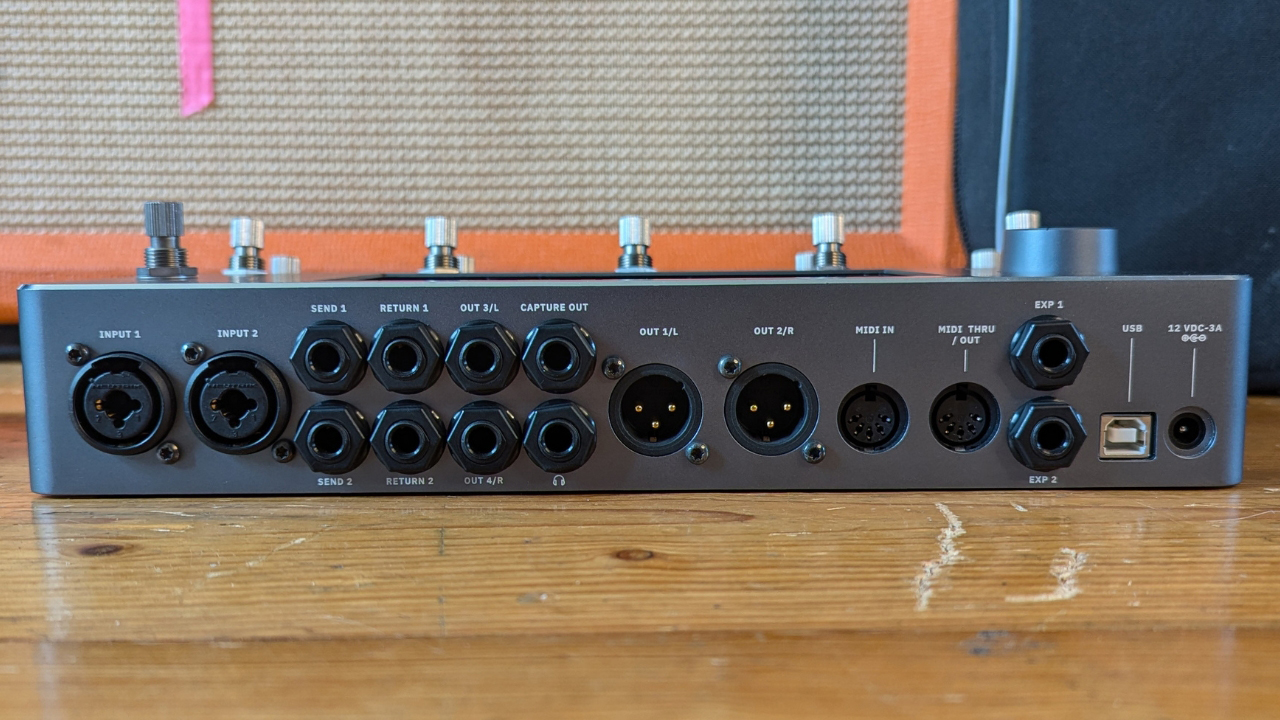
Connectivity for the Quad Cortex is second to none, providing a huge array of options for any musician. On the input stage, you’ve got two combi XLR and 1/4-inch inputs which allow you to connect a variety of instruments to the unit. Next up there are two separate send and return loops for integrating a guitar amp into the signal chain, whether you want to just use the QC effects or use the speaker of your amp alongside Neural's amp sims.
In terms of outputs, there are stereo 1/4-inch outputs, stereo XLR outputs, a headphone output, and a capture output for grabbing your own amp and pedal sounds (you use input one as your capture input). MIDI in and thru/out connections come next, and then you’ve got two expression pedal inputs for controlling a variety of effects and parameters. Finally, there’s a USB-B for firmware updates and recording.

The Nano Cortex as you might expect features significantly less in terms of connectivity. At the input stage, there’s a mono 1/4-inch input for the guitar, with a combi XLR and 1/4-inch capture input on the side of the unit. Stereo 1/4-inch outputs feature next, with the right output acting as a capture out.
A single 1/4-inch expression and MIDI connector is next, with a 1/8-inch output for headphones. There’s a USB-C connector for using it as a guitar audio interface, updating the unit, and it can also act as a MIDI input. You can power the Nano Cortex with a 9V pedalboard power supply, so long as it can output at least 600mA, or use a USB-C that delivers 5V-1.5A or 5V-3A.
Winner - If we’re going with pure numbers, then the Quad Cortex takes the win here. It vastly outnumbers the Nano Cortex with its connection options, making it much more flexible when it comes to integrating with a variety of setups.
Neural DSP Quad Cortex vs Nano Cortex: Build quality & design
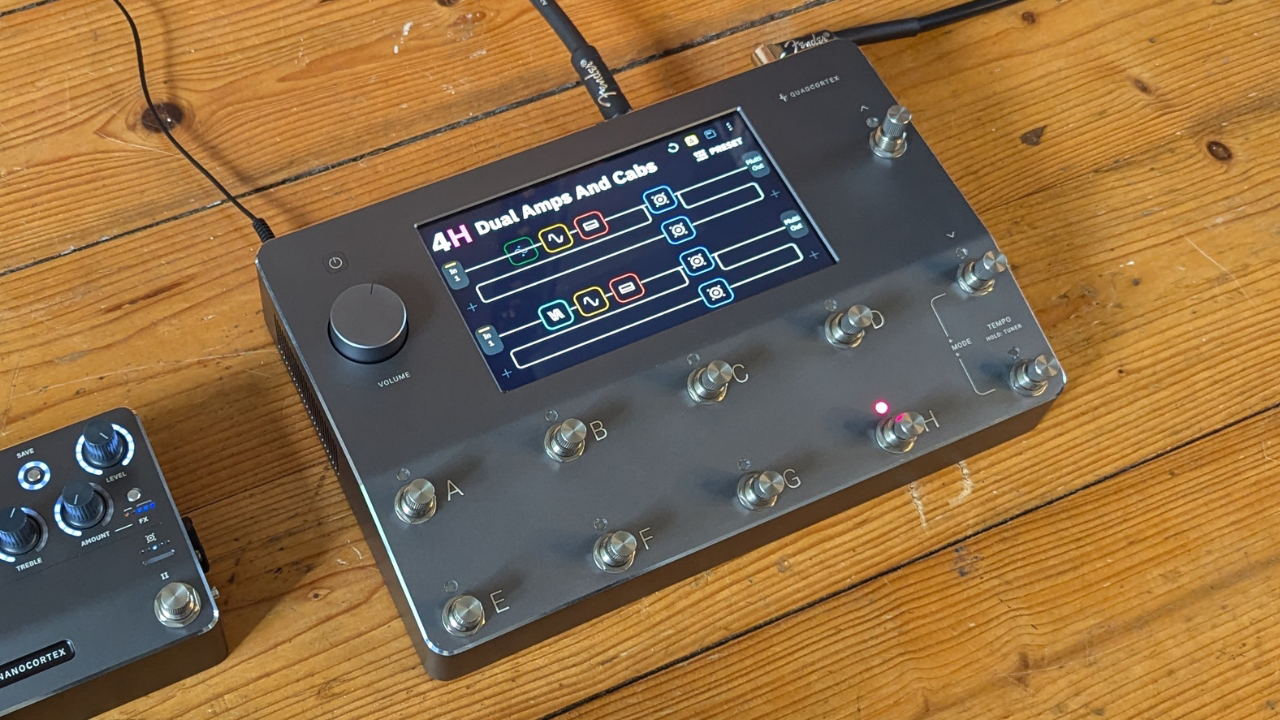
Moving on to build quality, the blue/grey aluminum housing of the Quad Cortex feels really solid in your hands. It's pretty hefty when it comes to weight, but still easy enough to carry with one hand. It’s a little bigger than you might expect looking at a picture of it too, but it’ll still fit pretty easily in a backpack, albeit it might be a squeeze to get it in the one on the front of your gig bag.
The front panel features the show-stopping 7-inch, multi-touch display. To the left is a large master volume knob with a touch power button above, while the right features two footswitches for changing preset banks. Underneath you’ve got 10 hybrid footswitch/rotary controls. The first 8 are labeled A to H, with the final two controlling various mode features, tap tempo, and tuner amongst others. Each footswitch also features a dedicated LED.
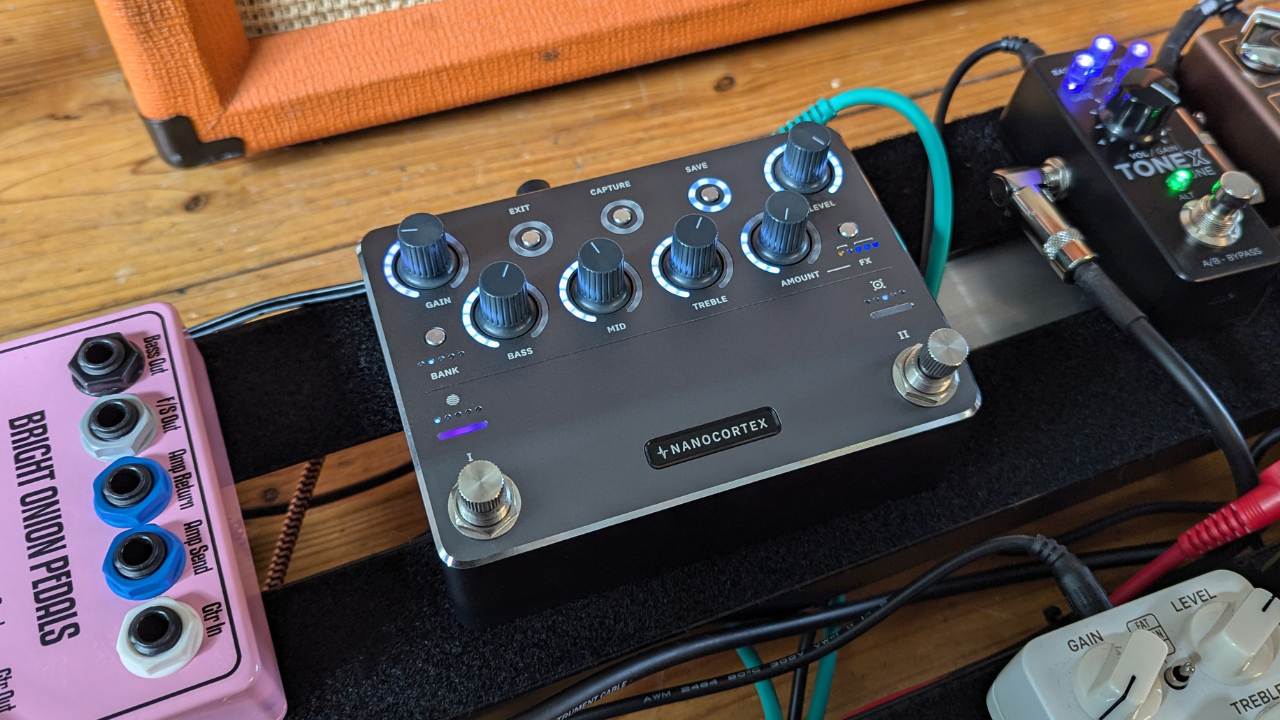
Stylistically the Nano Cortex is very similar, with the colour and aesthetic of the unit very much giving it the appearance that it’s the smaller sibling of the QC. But that’s where the similarities end. It’s about a quarter of the size of the Quad Cortex, and much, much lighter in your hand. It’s smaller than my HX Stomp, and the obvious aim is that it will also fit on the pedalboards of guitarists.
There’s no screen here - more on which in the usability section - with the majority of the front panel being taken up by knobs for controlling the amp settings. Starting from the top left you’ve got gain, bass, mid, treble, FX amount, and level knobs. Above these are three buttons labeled exit, capture, and save. Beneath the gain knob is a bank button, and beneath the level knob is a button for selecting FX. Finally, you’ve got two rotary/footswitch knobs labeled I and II.
Winner - Both pedals aim to do something completely different from one another, so separating them in terms of design is pretty difficult. Both feel sturdy enough to put up with hitting the gigging circuit so, we’re going to call this one a draw.
Neural DSP Quad Cortex vs Nano Cortex: Usability
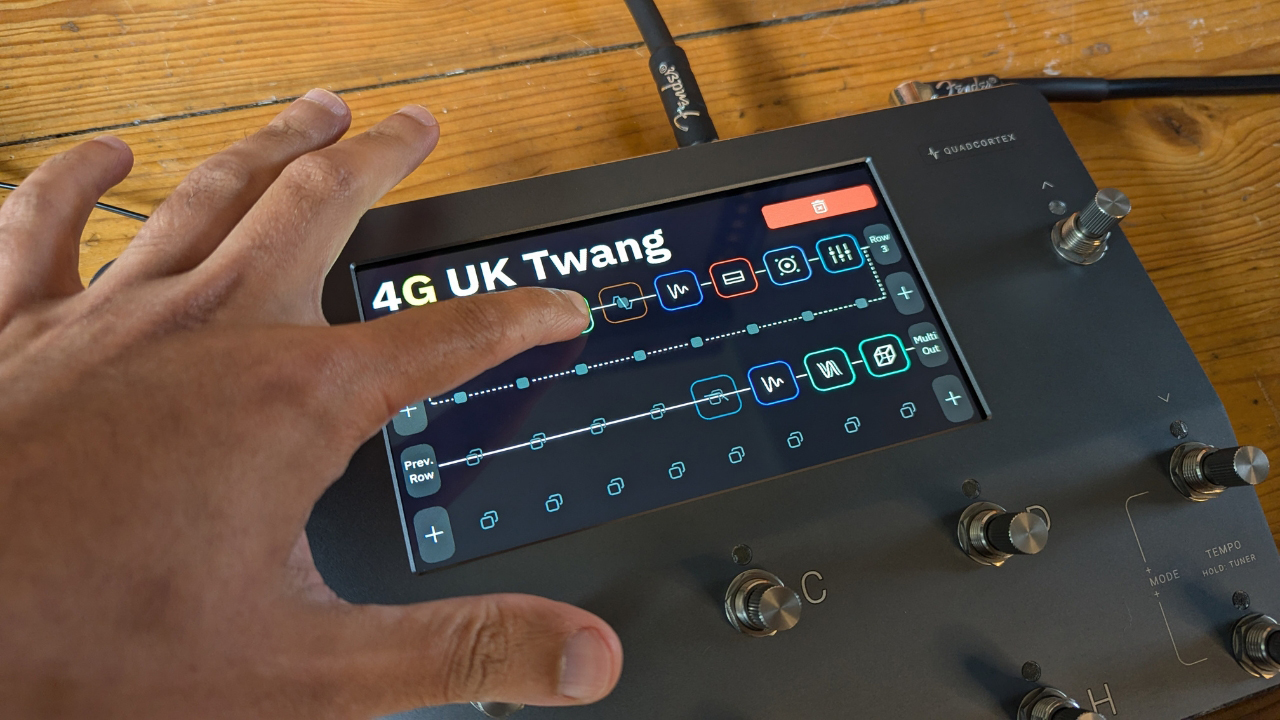
It takes a while to load up when you first switch it on, but actually using the Quad Cortex for the first time is an absolute breeze. The large touch screen makes it super intuitive to start moving your signal chains around, adding and removing components, while the physical switches get you moving through presets and banks quickly. Of course, there’s a lot of depth on offer but you won’t need the manual to just get started playing.
The touchscreen is a joy to use and is very responsive. Some of the on-screen items are pretty small so you might need a couple of presses if you’ve got sausage fingers, but overall I had minimal issues getting it to do what I wanted. The ingenious footswitches doubling as rotary knobs make it super easy to start changing the parameters of individual blocks if you don't like using the touchscreen, and they give you really fine control over your settings.
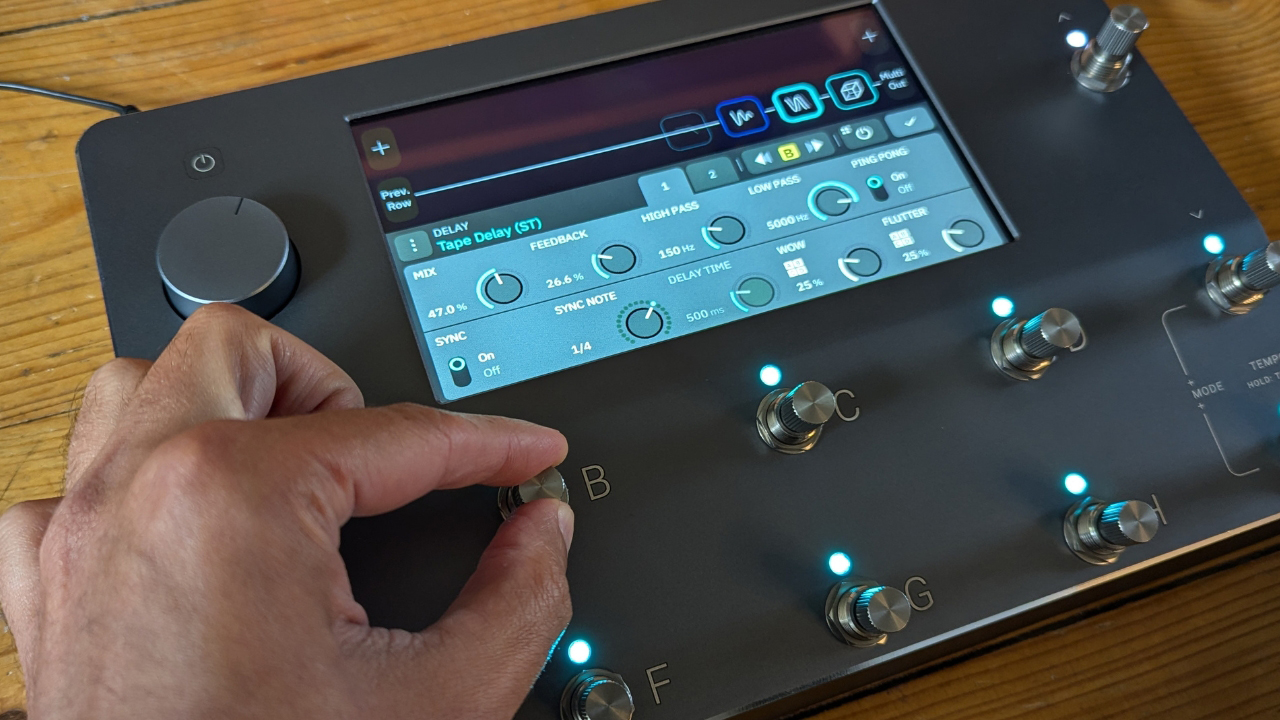
The depth on offer is absolutely staggering as well. From the simplest drive pedal, amp, and cab rigs to four different amplifiers each with their own effects chains the QC has the power to create pretty much any configuration you can think of. There’s no limit on what you can do with the signal chain order either, making it an amazing tool for the really creative thinkers. Making your own signal chains is really simple thanks to the drag-and-drop system and while you might need to dive into some YouTube videos for the really complex stuff, it’s incredibly simple to get up and running.
Comparatively, the lack of a screen on the Nano Cortex means it takes a little more time to work out exactly what’s going on. You can play immediately, but certain features didn’t make sense without me having to refer to the manual. Some things like assigning presets to the footswitches are also only available via the app, which means you have to include your smartphone as part of your initial workflow when setting it up.
You can put two presets on each footswitch for quick recall, giving you quick access to four different tones. Each footswitch also features a rotary control that lets you select one of five different captures on the left-hand side, or five different impulse responses on the right-hand footswitch. With five banks in total, there are plenty of ways to set your rig up if you’re covering a lot of sonic ground in your band. You’ll want to do this via the app though, as doing it via the pedal controls requires a lot of steps and I found it more effort than it was worth.
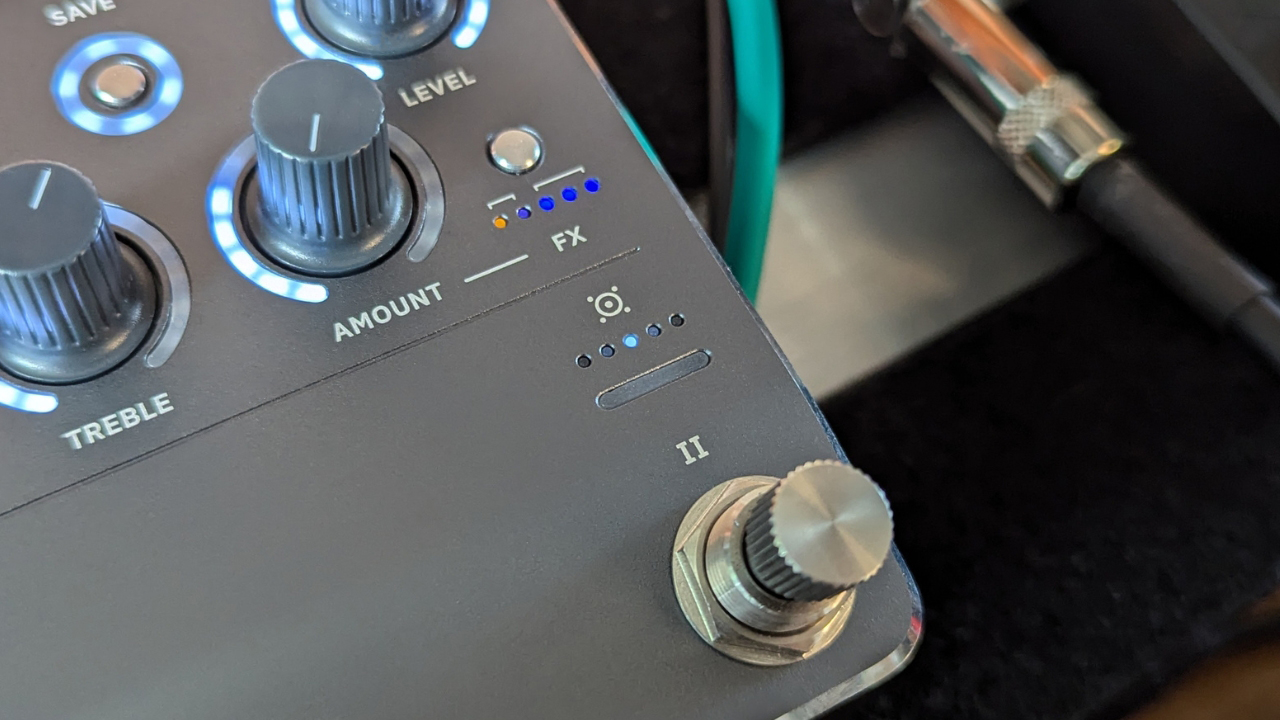
The signal chain on the Nano Cortex is much more limited, and you can’t change the order of anything. You've got two pre-effects consisting of a noise gate and pitch shifter that come before your amp and cab capture. Post is a trio of modulation, delay, and reverb. Each is controlled by the amount knob, which dictates a single parameter change whether that's the mix of the time-based post effects, or the noise reduction of the gate and semi-tone of the pitch shifter.
Initially, it feels very limited, especially compared to the vast possibilities of the Quad Cortex. That said, the NC is designed to work in conjunction with a pedalboard, so in all likelihood, you’ll be using your own effects anyway. I put my drive pedals in front of it and my time-based effects after, as that's how I like to run my effects with my regular guitar amp. It worked brilliantly for me in this format.
Winner - Each does something different, in a different way. But when it comes to pure ease of use, surprisingly it's the more complex Quad Cortex that gets the win here. The screen makes it much more intuitive to chop and change things quickly and intuitively, even if you’ve never had an amp modeler before.
Neural DSP Quad Cortex vs Nano Cortex: Sounds

When it comes to sounds let's make one thing clear, each goes about its tone creation in a slightly different way. The Quad Cortex primarily features modeled amp sounds, which give you a lot more in terms of tweakability. The Nano Cortex on the other hand features captured amp and cab tones, which are more like a snapshot of a particular amp tone with certain EQ settings baked in. You can tweak them of course, but they won’t behave in the realistic way a modeled amplifier would.
Both units sound phenomenal, there’s absolutely no question of that. The amp tones whether modeled or captured very much sound like the real deal, and the effects are stunning too. Having tested a huge variety of amp modelers over the years, the Neural DSP stuff really is up there amongst the best I’ve ever heard, and the differences between the modeling, the captures, and the real deal are minimal.
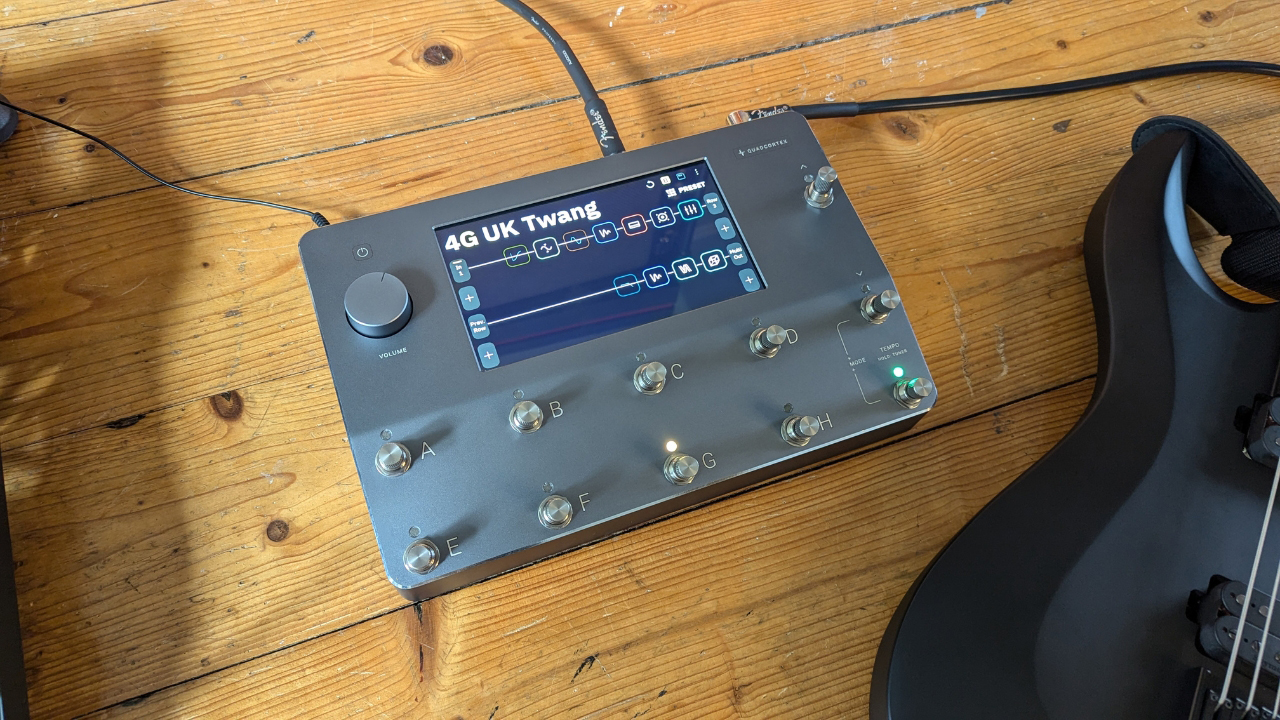
The QC gets a lot more choice, but there are plenty of Neural captures on the Nano Cortex that will cover the vast majority of styles. There’s also a huge amount of user captures on the Cortex Cloud to pull from that are available to add to both units. It’s important to note that both units are unable to capture time-based effects pedals, as the nature of these makes it impossible for the snapshot process of a capture to work as a pedal would.
Again, the difference here comes down to use case. If you want to be able to tweak your sounds in depth and have more control, then the Quad Cortex will be for you. For those who want to take the sound of their rig on the road with them and integrate their pedalboard, then the captures of the Nano Cortex will deliver that sound you know and love without having to lug a heavy tube amp around with you.
Winner - We’re going to call this one a draw. Both units do their sound creation slightly differently, but both manage to deliver fantastic quality irrespective of that.
Neural DSP Quad Cortex vs Nano Cortex: Verdict
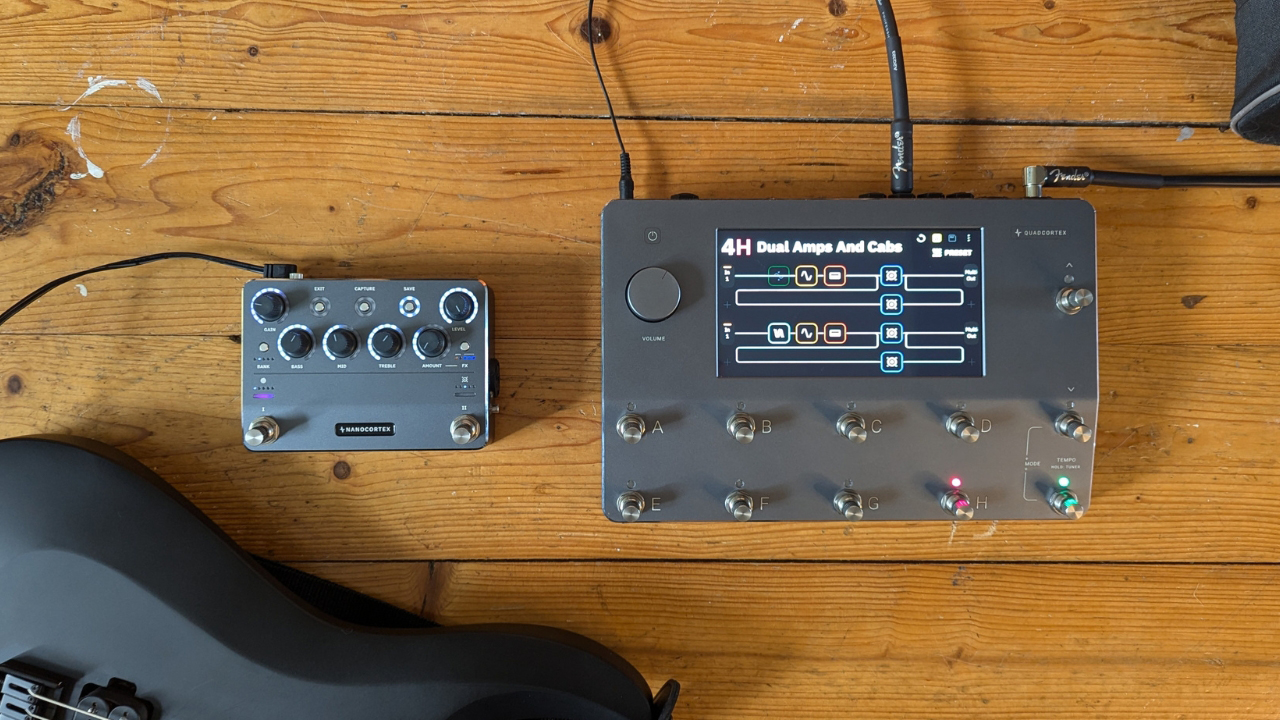
It’s a really tough one to call here as the Quad Cortex and Nano Cortex are both really good, but both are designed for very different uses. On the face of it, the Quad Cortex won out in two different categories, while the other two were draws, and my experience was much more fun with the QC. That said, it’s an incredibly expensive and in-depth piece of equipment that was naturally always going to dwarf the Nano Cortex in a straight numbers game.
What it really comes down to is what you want to use them for. If you need a full-featured amp modeler that can do absolutely everything, and you have a big budget, then the Quad Cortex is going to give you what you want. It’s surprisingly easy to use, has more features than you’ll know what to do with, and most importantly it sounds incredible.
On the other hand, if you’re satisfied with the sound of your current amp and can’t do without your pedalboard, but are sick and tired of carrying a heavy amplifier around with you, then you should go for the Nano Cortex. The captures are astoundingly good and the process of getting your drive pedals, amps, and cabs into it is surprisingly simple. Its small size means it’ll fit nicely on your ‘board and varying power options make it great as a travel rig.







